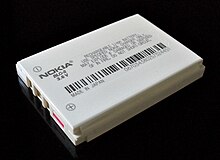
The lead–acid battery was invented in 1859 by French physicist Gaston Planté and is the oldest type of rechargeable battery. Despite having a very low energy-to-weight ratio and a low energy-to-volume ratio, its ability to supply high surge currents means that the cells have a relatively large power-to-weight ratio. These features, along with their low cost, makes it attractive for use in motor vehicles to provide the high current required by automobile starter motors.
As they are inexpensive compared to newer technologies, lead-acid batteries are widely used even when surge current is not important...
![]() So we are all familiar with the drill, given through the following:
I question the use of "question" in question titles
Help make help questions have more helpful titles
There are currently 34 uses of "problem" in titles which could benefit from some more descriptive headings:
http://chemis...
So we are all familiar with the drill, given through the following:
I question the use of "question" in question titles
Help make help questions have more helpful titles
There are currently 34 uses of "problem" in titles which could benefit from some more descriptive headings:
http://chemis...

